The last stop on the Illinois River, where the Illinois flows into the mighty Mississippi River, is Grafton, IL. We arrived in Grafton on Sunday, 9/9, at the end of another long day on the river. Grafton is apparently a very popular weekend boating destination for nearby St. Louis residents, because the marina was overflowing with ski boats, house boats and cruisers, all trying to squeeze one more day of summer fun in before the fall weather arrived. Before we could step off of Rickshaw after backing her into her slip in the Grafton harbor, we were met at the dock by inquisitive weekend boaters and other loopers, all inquiring about where we'd been. We estimated that around 15 people at one time were standing behind our boat. Some of the questions were kind of strange, e.g. one man wanted to know if I thought it was possible to put a small amphibious airplane on the dinghy deck, and another person wanted to know if I knew if any of the boats that were around us were for sale. After getting Rickshaw settled into her slip, we met up with a few other loopers, including Queen Kathleen, that we hadn't seen for a while, followed by a dinner get-together at the local biker bar - a BBQ shack/restaurant.
The next day, Monday, we took a road trip, via a rental car, along with Rick & Diane on Toucan and Bruce & Bev on The Last Resort, to visit the sights of St. Louis and St. Charles, including a brief stop at the home Belinda was born in, in St. Charles. The St. Louis trip included a tour of the Anheuser-Busch brewery, where we learned, among other things, that AB gets its water for brewing the beer from the Mississippi. After the AB tour, we quickly sped over to the St. Louis arch for a quick trip to the top, before returning back to Grafton.
Tuesday was the day when we would start the fast push down the Mississippi River 220 miles to the confluence of the Mississippi & Ohio Rivers at Cairo. With the current flowing at 3-4 mph we were able to speed along, at times going 14 mph, as compared to our normal 10 mph cruising speed. We were constantly on the VHF radio calling tows pushing large rafts of barges up & down the river, to make sure that we knew which side to pass each of them on and to make sure we wouldn't be run down. As one might expect, there are not very many coves, inlets or other places to stop along the river, so each day on the river had to be carefully planned out to ensure that we knew where we were going to stop, especially if space was limited. One such place that had limited space was our destination for Tuesday, Hoppie's Marina 60 miles down the river from Grafton. Hoppie's Marina is famous, if not infamous, among loopers as an obligatory stop along the Great Loop route. It is basically several barges that are tied together along the Mississippi river bank, that has been providing a stopover spot for boaters for 80 years. It is run by an elderly couple, Fern & Hoppie, who are a repository of knowledge for the river conditions from here south to Mobile. Each afternoon, Fern gathers all of the boaters that arrived that day together in a circle on one of the barges to share her wisdom on where it's safe to go and stop along the way. She described how the drought this year has really compromised the ability of commercial & pleasure boaters to make safe passage down river. A lot of the trusted & true anchorages are too shallow to enter this year, making it necessary to be slightly more creative in finding a good spot to stopover each night. Between Hoppies and the Ohio River, which is 180 miles further south, there was only one possible stop, 60 miles down river, at a lock & dam on a Mississippi River tributary, the Kaskaskia River.
We left Hoppie's at 9:00 Wednesday morning, catching the fast moving southbound current as we pulled away from the barges and into the main channel. At 12-14 mph, our 60 mile trip was very fast. We arrived at the Kaskaskia lock around 1:00pm, tying our docklines to whatever security we could find on the work barge alongside the lock. Since there was only room for two of the three boats on the barge, The Last Resort had to raft up to Rickshaw and Paddy Wagon. The early arrival gave us some time to get caught up on a few boat projects.
Thursday was going to be the longest day so far of the entire trip, 119 statute miles, to enable us to get to the next/only anchorage stop remaining on the river. The stop suggested by Fern was, at first glance, very much less than ideal. We pulled in behind a 100 ft long sandbar that jutted out into the river, and the 3 boats in our little looper group (Rickshaw, Last Resort & Paddy Wagon) dropped their anchors in 12-15 feet of sticky, Mississippi gumbo mud. Even though we were very much out of the channel, it was still a bit unsettling to be brought into several million candlepower illumination by the searchlights from tows rounding the bend coming up the Mississippi and out of the Ohio, just 100 yards further south throughout the night.
Thursday happened to be Bev's birthday, so our (Rickshaw & Last Resort) present to her was to host a surprise dinner for her on Rickshaw, which meant we had to get everybody onto Rickshaw's aft deck via dinghy, which Don on Last Resort was willing to do by dropping his dinghy into the water, and picking up Bev & Bruce along the way.
On Friday, at first light, we pulled up our anchors and made the turn into the Ohio River, this time fighting current since we were going upstream on the Ohio. As was our experience on the Mississippi, there were very few dependable anchorages, and no marinas, on the 60 miles we needed to go to get to the mouth of the Cumberland River. Normally, 60 miles in a single day, even against the current, is not beyond our daily limit, but we had to transit 2 locks that day, which were known for having very significant delays. A week or so earlier, we had heard reports of some boaters being held up for up to 24 hours waiting for their turn to enter the second of the two locks. As we approached the first lock, which was usually pretty quick for most loopers, we were informed that our expected wait time was to be 2 hours or more. So we all three dropped our anchors out of the channel, turned off our engines, and waited, as patiently as we could, for the lockmaster's voice over the VHF radio telling us to proceed up to the lock. Over 3 1/2 hours later, we got the call and rushed into the lock, not even bothering to tie up. We just free-floated in the lock, counteracting the rushing of the water being let into the chamber with our engines. After such a long delay, and with the prospect of a long delay at the second lock, we weren't sure where we would be able to stop that night, because the recommended anchorage, at the mouth of the Cumberland River, now seemed to be out of reach during the daylight hours, and travelling at night along the river was definitely not a good idea. When we got to the 2nd lock, we were told that our wait would be about an hour, which made the Cumberland anchorage reachable but just after sunset. We decided to try to find a good spot at the mouth of the Tennessee River, 15 miles closer, near Paducah, KY. We had read, on a boaters' website, that some people had reported, in earlier years, that they were able to anchor next to a small island called Cuba Towhead. But when we arrived there, we didn't see any way that this spot could be useable, since the spot where we would anchor would be in the middle of an active channel used by the local towboats. We spotted a old, rusty, apparently abandoned, 130 foot barge tied to the bank, so we made the group decision to tie up there for the night, with the hope that we would not be kicked off by the owner before the next morning. Fortunately, we weren't and spent a quiet night tied to the rustly old barge, rocked by the wakes of passing tows moving barges up and down the narrow channel throughout the night.
The next day, Monday, we took a road trip, via a rental car, along with Rick & Diane on Toucan and Bruce & Bev on The Last Resort, to visit the sights of St. Louis and St. Charles, including a brief stop at the home Belinda was born in, in St. Charles. The St. Louis trip included a tour of the Anheuser-Busch brewery, where we learned, among other things, that AB gets its water for brewing the beer from the Mississippi. After the AB tour, we quickly sped over to the St. Louis arch for a quick trip to the top, before returning back to Grafton.
Tuesday was the day when we would start the fast push down the Mississippi River 220 miles to the confluence of the Mississippi & Ohio Rivers at Cairo. With the current flowing at 3-4 mph we were able to speed along, at times going 14 mph, as compared to our normal 10 mph cruising speed. We were constantly on the VHF radio calling tows pushing large rafts of barges up & down the river, to make sure that we knew which side to pass each of them on and to make sure we wouldn't be run down. As one might expect, there are not very many coves, inlets or other places to stop along the river, so each day on the river had to be carefully planned out to ensure that we knew where we were going to stop, especially if space was limited. One such place that had limited space was our destination for Tuesday, Hoppie's Marina 60 miles down the river from Grafton. Hoppie's Marina is famous, if not infamous, among loopers as an obligatory stop along the Great Loop route. It is basically several barges that are tied together along the Mississippi river bank, that has been providing a stopover spot for boaters for 80 years. It is run by an elderly couple, Fern & Hoppie, who are a repository of knowledge for the river conditions from here south to Mobile. Each afternoon, Fern gathers all of the boaters that arrived that day together in a circle on one of the barges to share her wisdom on where it's safe to go and stop along the way. She described how the drought this year has really compromised the ability of commercial & pleasure boaters to make safe passage down river. A lot of the trusted & true anchorages are too shallow to enter this year, making it necessary to be slightly more creative in finding a good spot to stopover each night. Between Hoppies and the Ohio River, which is 180 miles further south, there was only one possible stop, 60 miles down river, at a lock & dam on a Mississippi River tributary, the Kaskaskia River.
We left Hoppie's at 9:00 Wednesday morning, catching the fast moving southbound current as we pulled away from the barges and into the main channel. At 12-14 mph, our 60 mile trip was very fast. We arrived at the Kaskaskia lock around 1:00pm, tying our docklines to whatever security we could find on the work barge alongside the lock. Since there was only room for two of the three boats on the barge, The Last Resort had to raft up to Rickshaw and Paddy Wagon. The early arrival gave us some time to get caught up on a few boat projects.
Thursday was going to be the longest day so far of the entire trip, 119 statute miles, to enable us to get to the next/only anchorage stop remaining on the river. The stop suggested by Fern was, at first glance, very much less than ideal. We pulled in behind a 100 ft long sandbar that jutted out into the river, and the 3 boats in our little looper group (Rickshaw, Last Resort & Paddy Wagon) dropped their anchors in 12-15 feet of sticky, Mississippi gumbo mud. Even though we were very much out of the channel, it was still a bit unsettling to be brought into several million candlepower illumination by the searchlights from tows rounding the bend coming up the Mississippi and out of the Ohio, just 100 yards further south throughout the night.
Thursday happened to be Bev's birthday, so our (Rickshaw & Last Resort) present to her was to host a surprise dinner for her on Rickshaw, which meant we had to get everybody onto Rickshaw's aft deck via dinghy, which Don on Last Resort was willing to do by dropping his dinghy into the water, and picking up Bev & Bruce along the way.
On Friday, at first light, we pulled up our anchors and made the turn into the Ohio River, this time fighting current since we were going upstream on the Ohio. As was our experience on the Mississippi, there were very few dependable anchorages, and no marinas, on the 60 miles we needed to go to get to the mouth of the Cumberland River. Normally, 60 miles in a single day, even against the current, is not beyond our daily limit, but we had to transit 2 locks that day, which were known for having very significant delays. A week or so earlier, we had heard reports of some boaters being held up for up to 24 hours waiting for their turn to enter the second of the two locks. As we approached the first lock, which was usually pretty quick for most loopers, we were informed that our expected wait time was to be 2 hours or more. So we all three dropped our anchors out of the channel, turned off our engines, and waited, as patiently as we could, for the lockmaster's voice over the VHF radio telling us to proceed up to the lock. Over 3 1/2 hours later, we got the call and rushed into the lock, not even bothering to tie up. We just free-floated in the lock, counteracting the rushing of the water being let into the chamber with our engines. After such a long delay, and with the prospect of a long delay at the second lock, we weren't sure where we would be able to stop that night, because the recommended anchorage, at the mouth of the Cumberland River, now seemed to be out of reach during the daylight hours, and travelling at night along the river was definitely not a good idea. When we got to the 2nd lock, we were told that our wait would be about an hour, which made the Cumberland anchorage reachable but just after sunset. We decided to try to find a good spot at the mouth of the Tennessee River, 15 miles closer, near Paducah, KY. We had read, on a boaters' website, that some people had reported, in earlier years, that they were able to anchor next to a small island called Cuba Towhead. But when we arrived there, we didn't see any way that this spot could be useable, since the spot where we would anchor would be in the middle of an active channel used by the local towboats. We spotted a old, rusty, apparently abandoned, 130 foot barge tied to the bank, so we made the group decision to tie up there for the night, with the hope that we would not be kicked off by the owner before the next morning. Fortunately, we weren't and spent a quiet night tied to the rustly old barge, rocked by the wakes of passing tows moving barges up and down the narrow channel throughout the night.
| | |

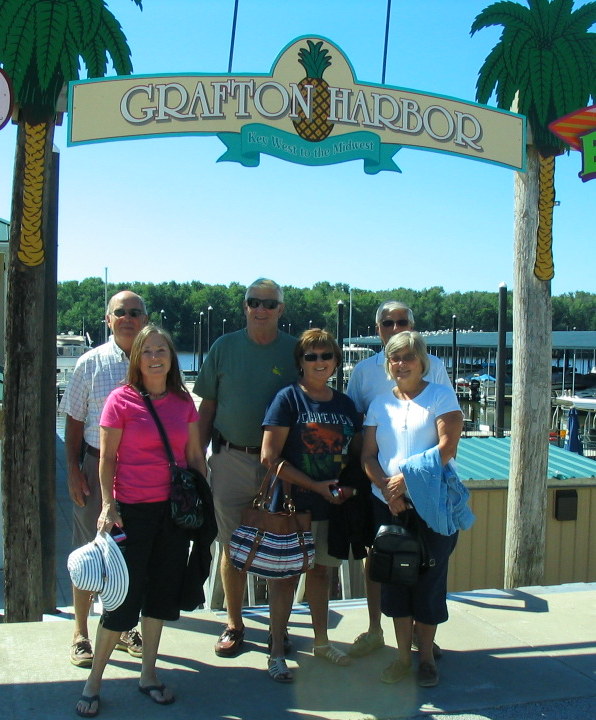
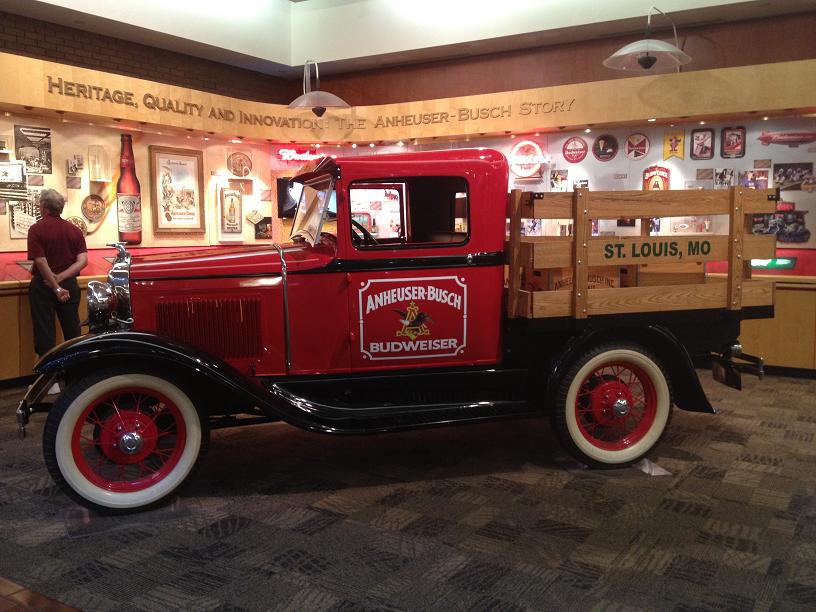
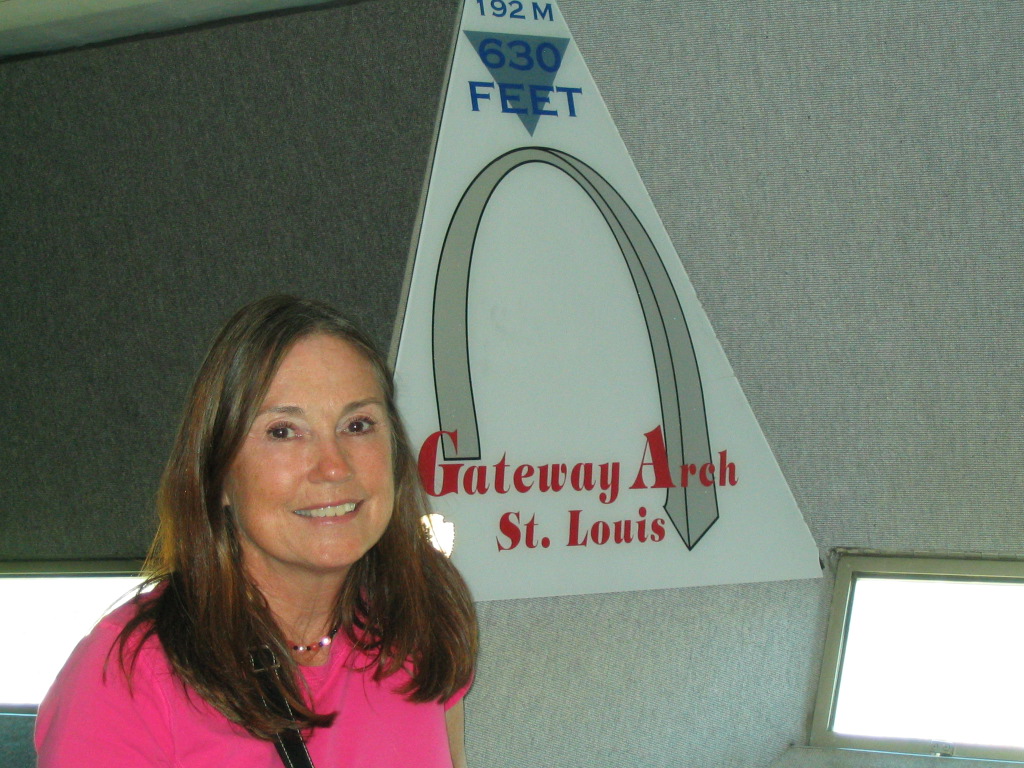



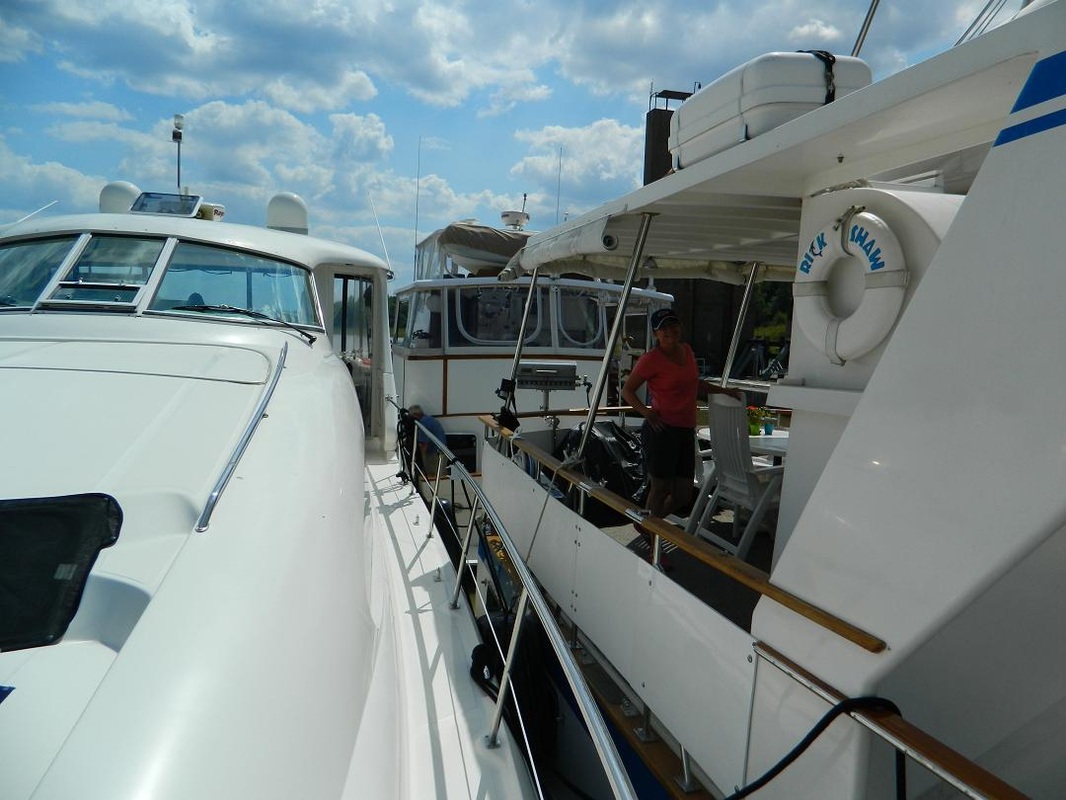

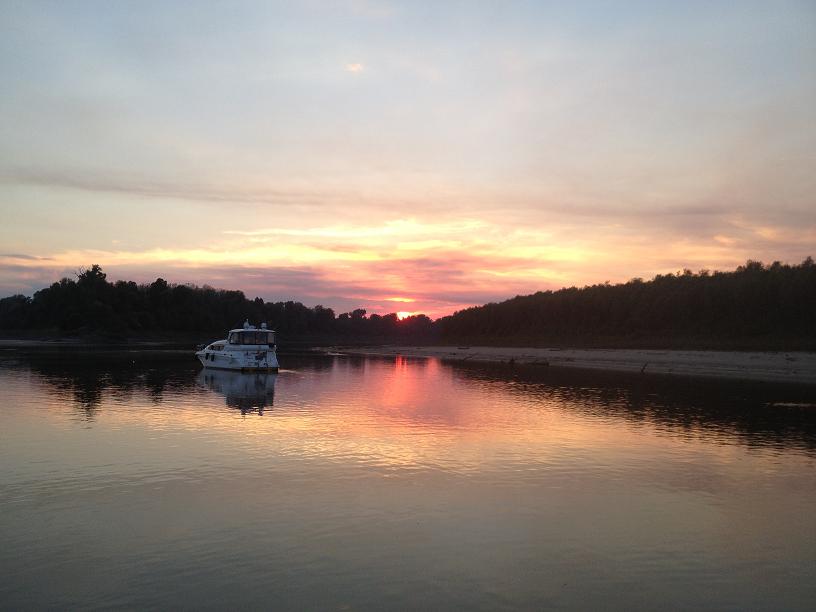
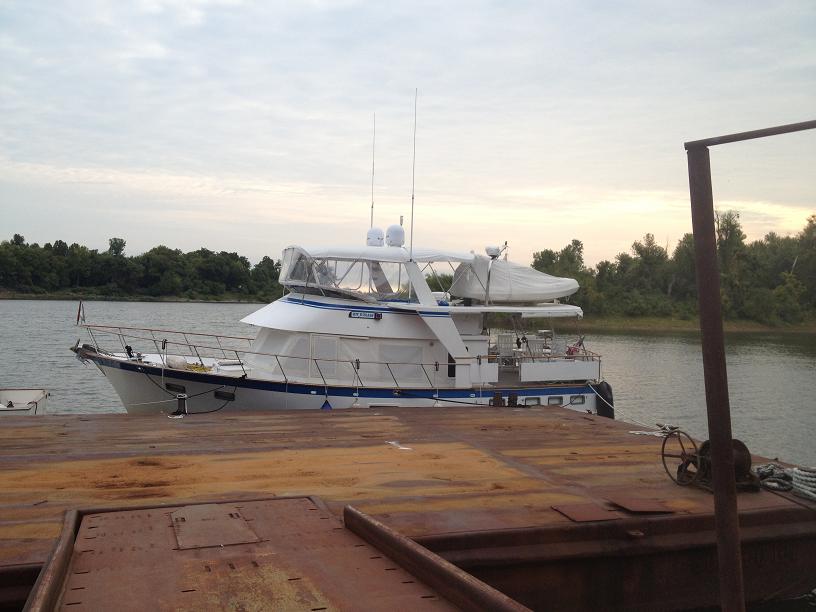
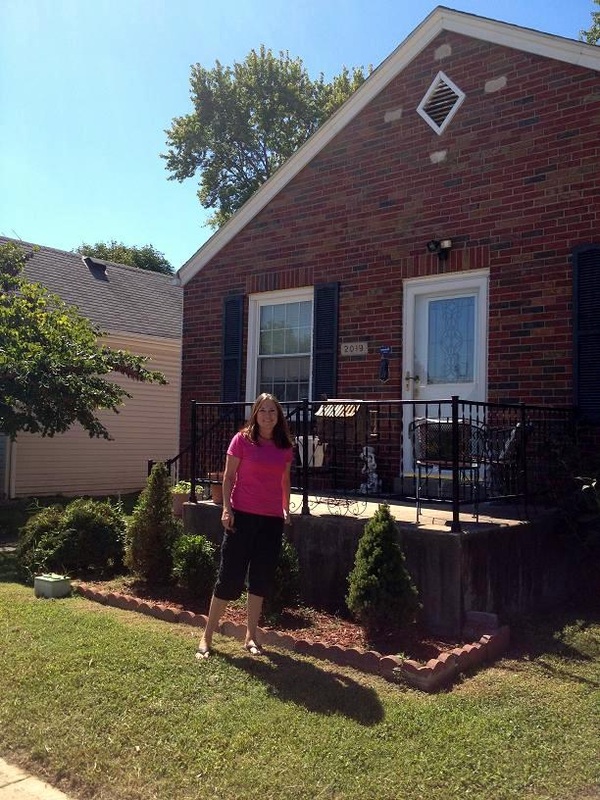
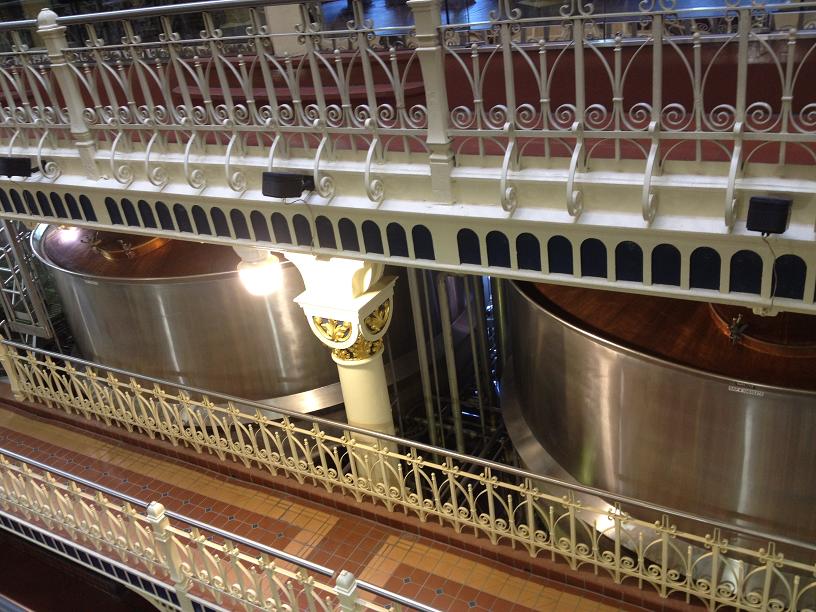
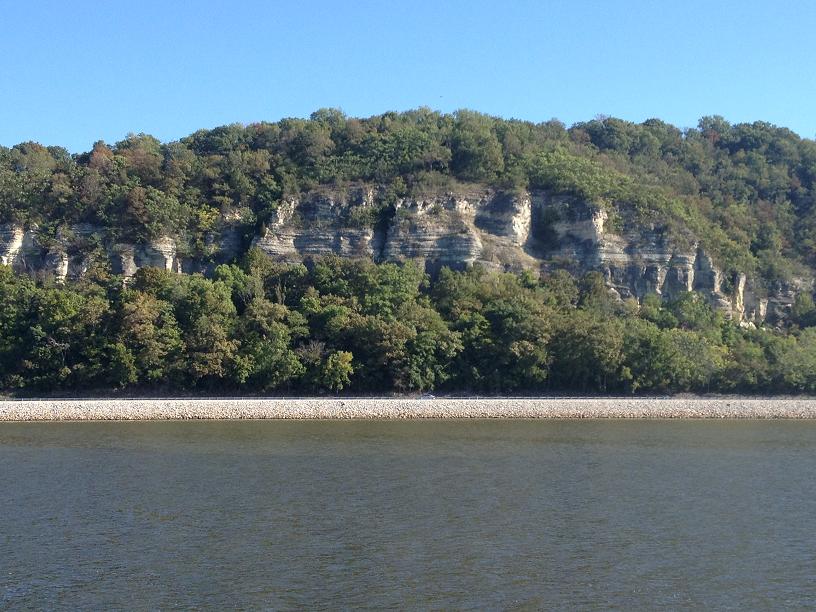

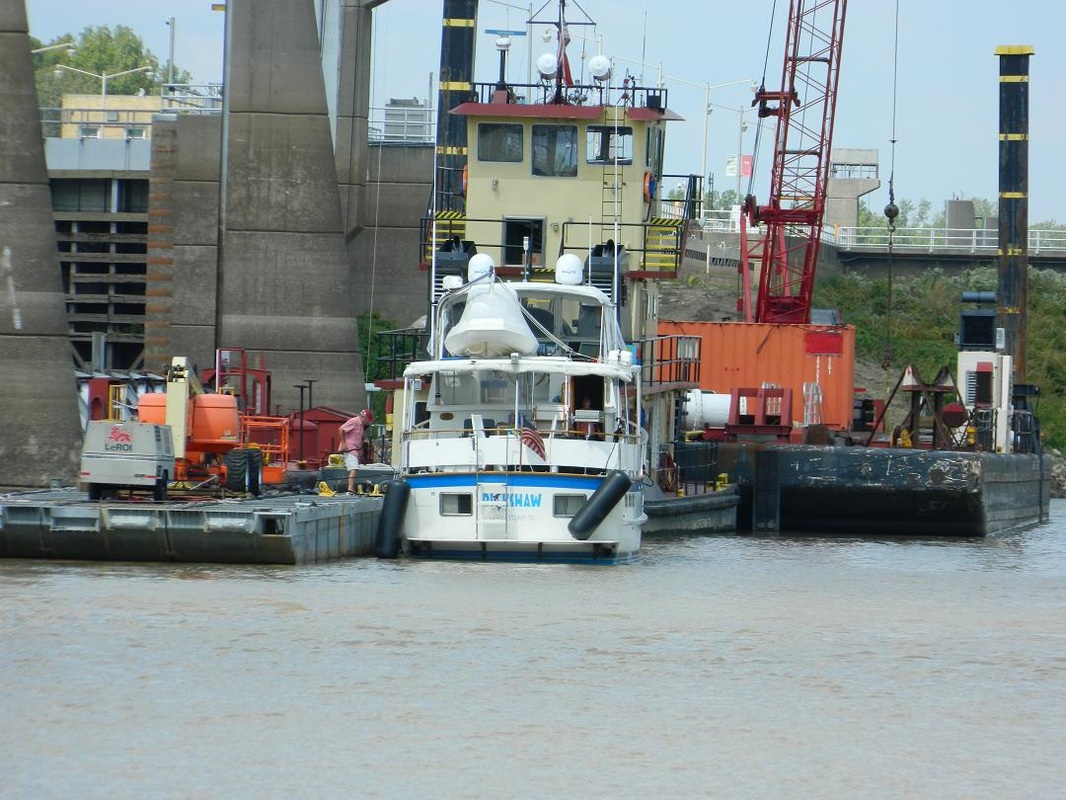
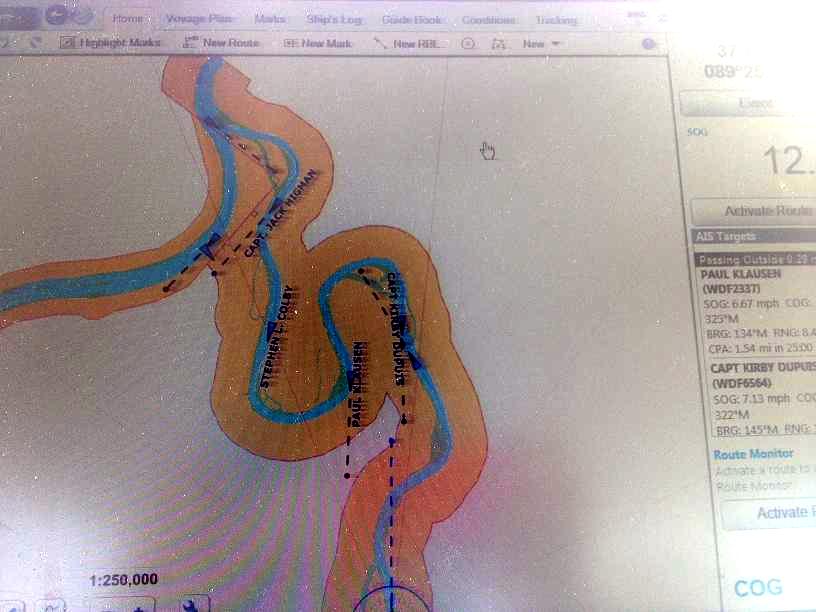
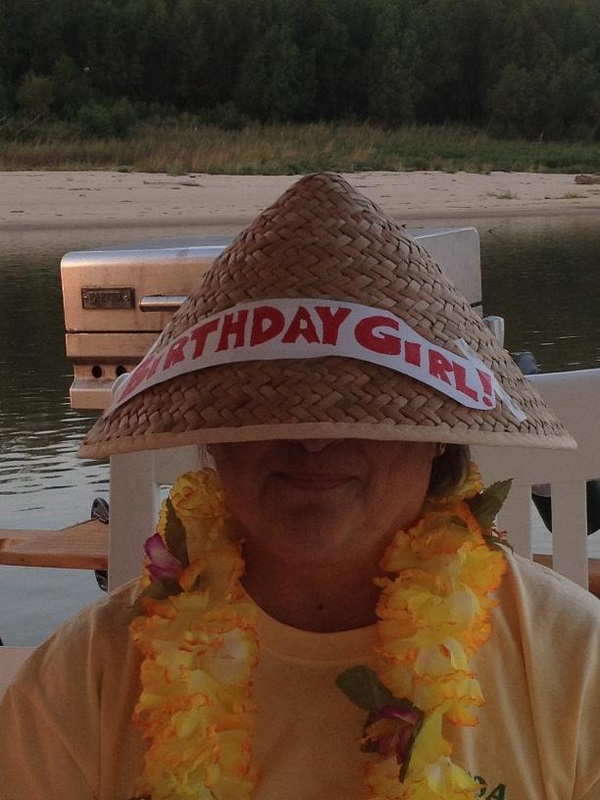
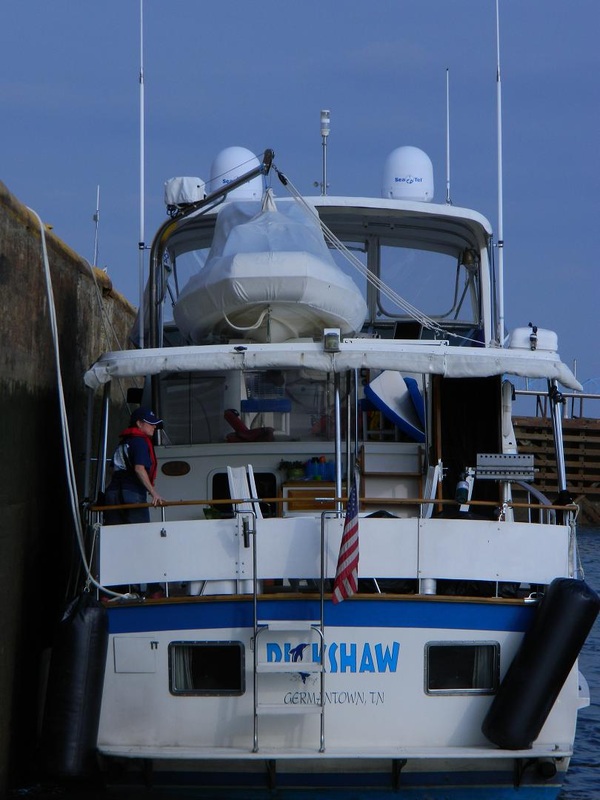

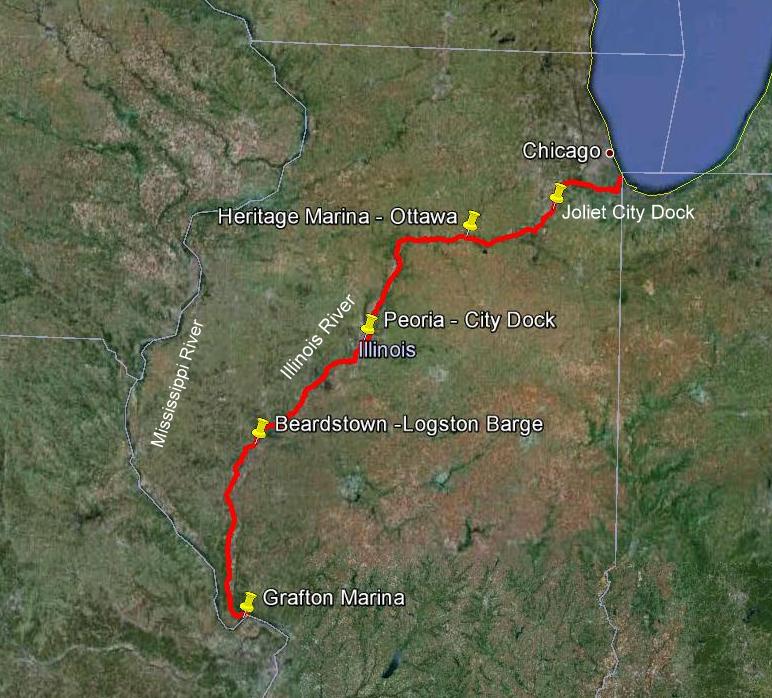
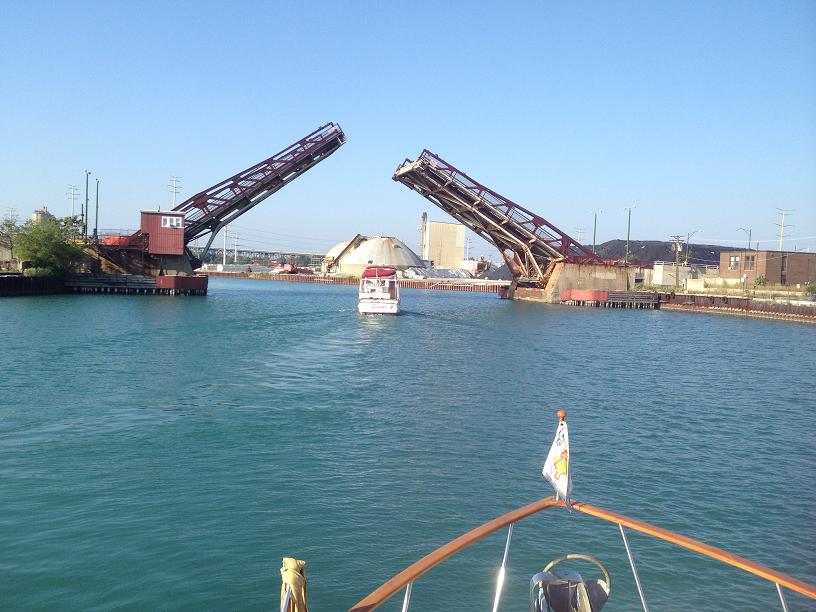
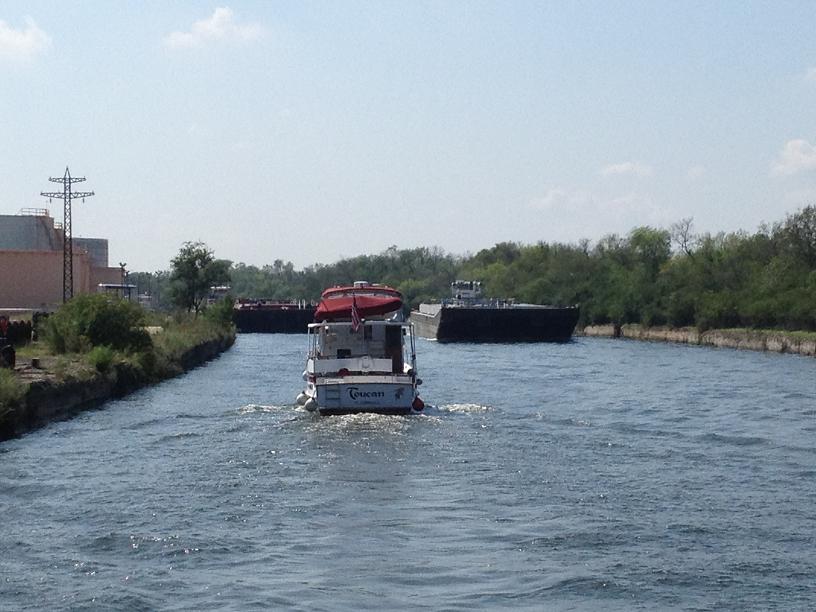
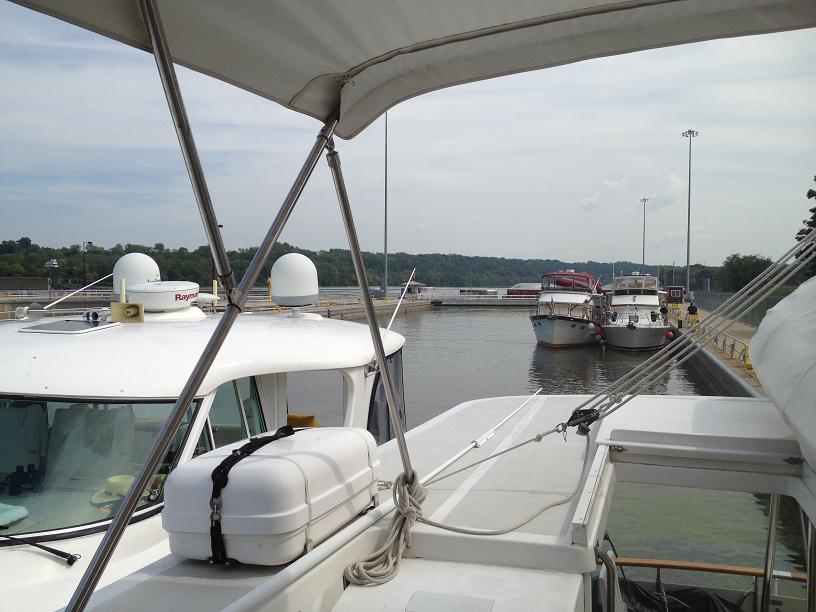
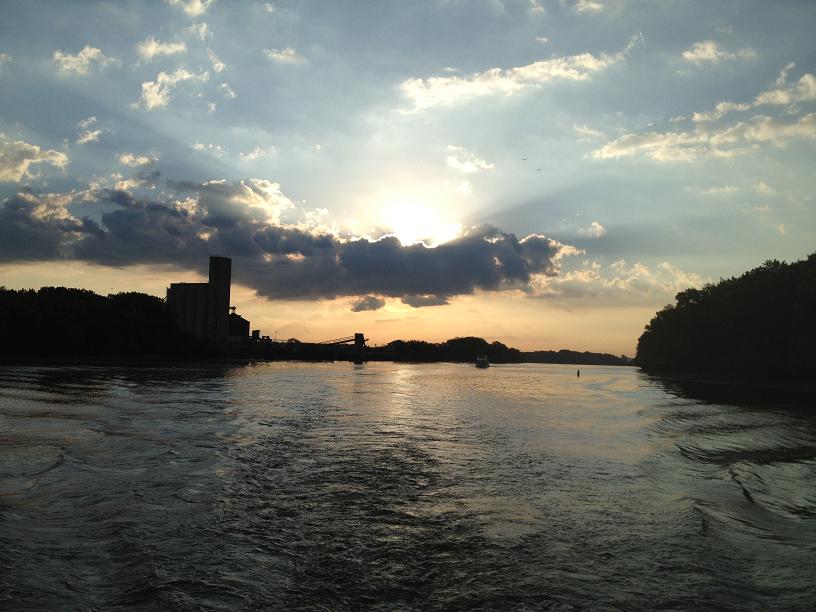
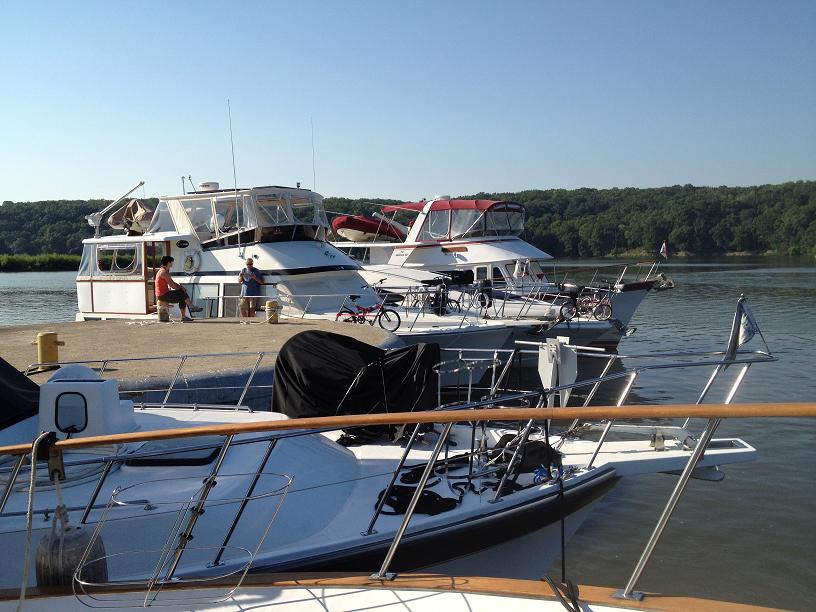
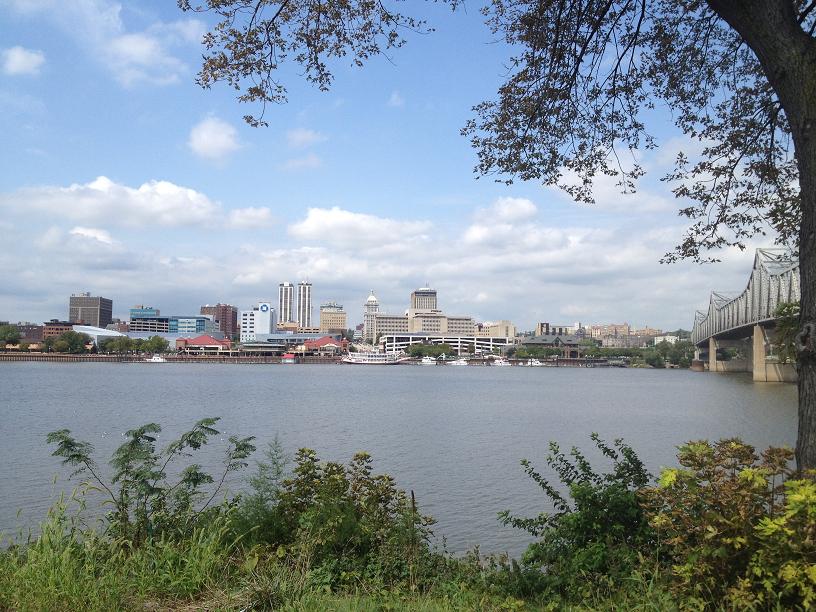
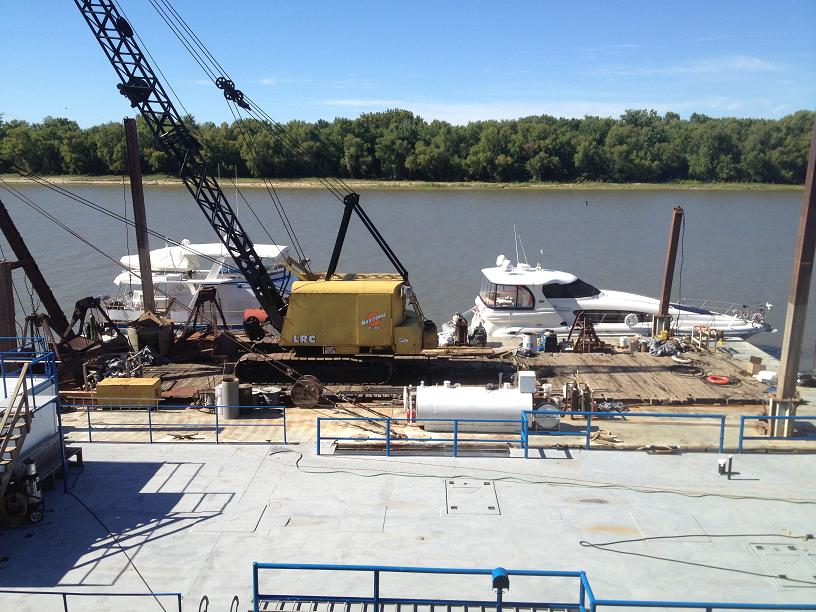
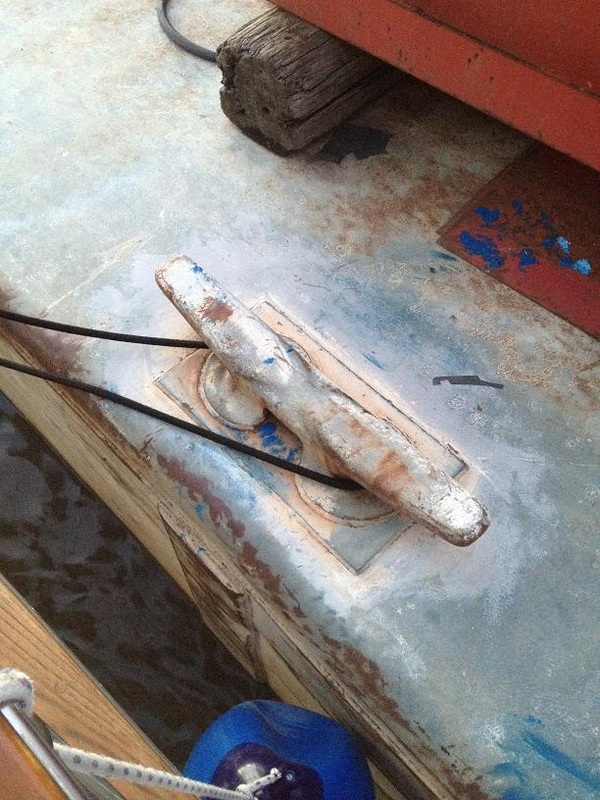
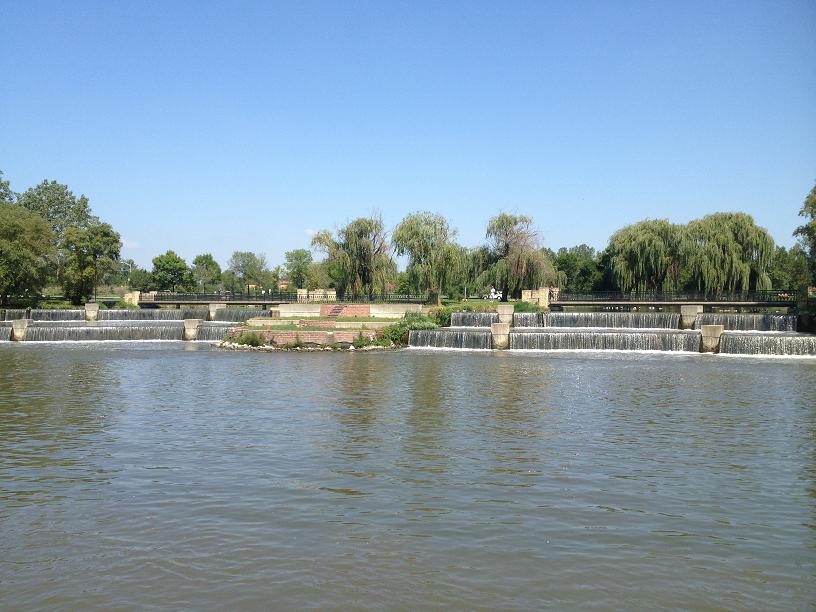
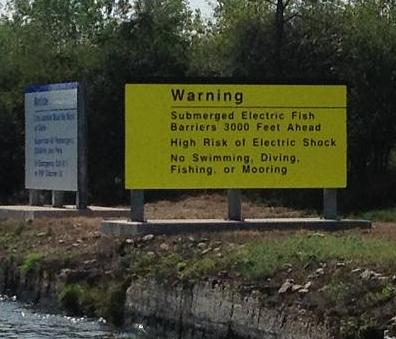
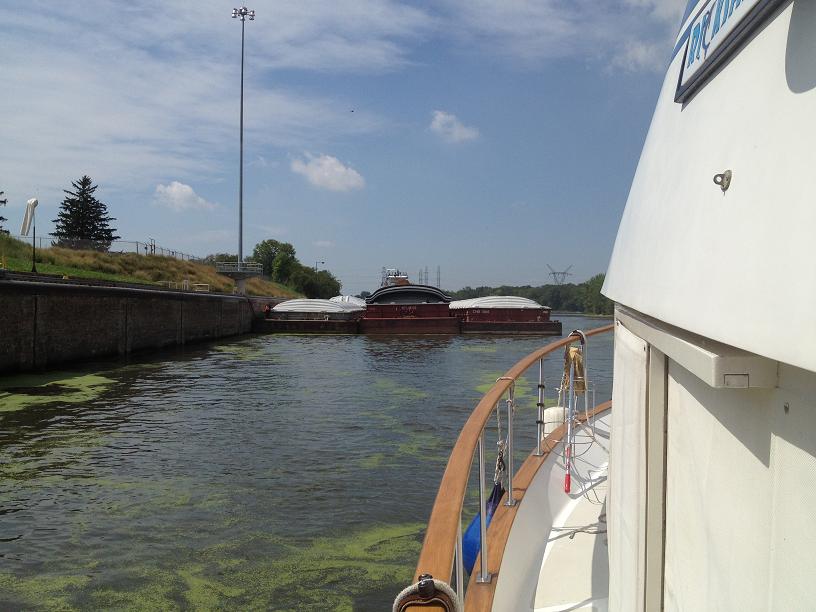
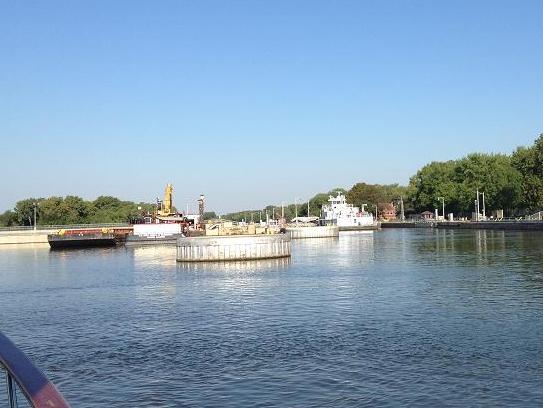

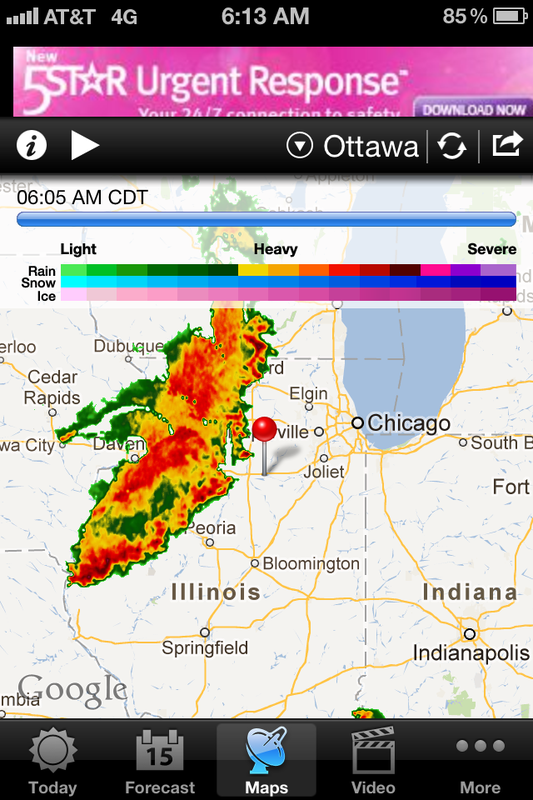
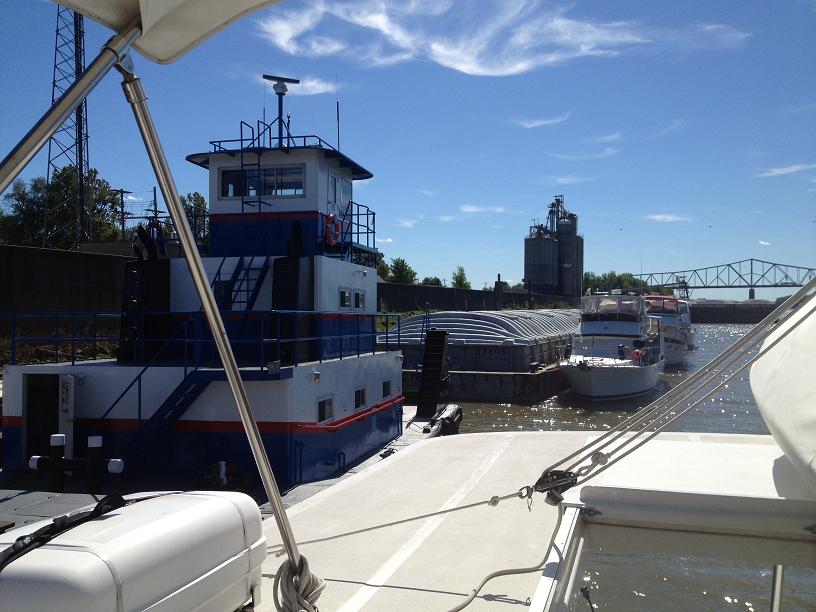
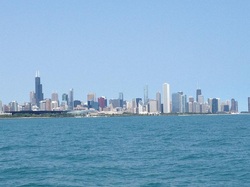
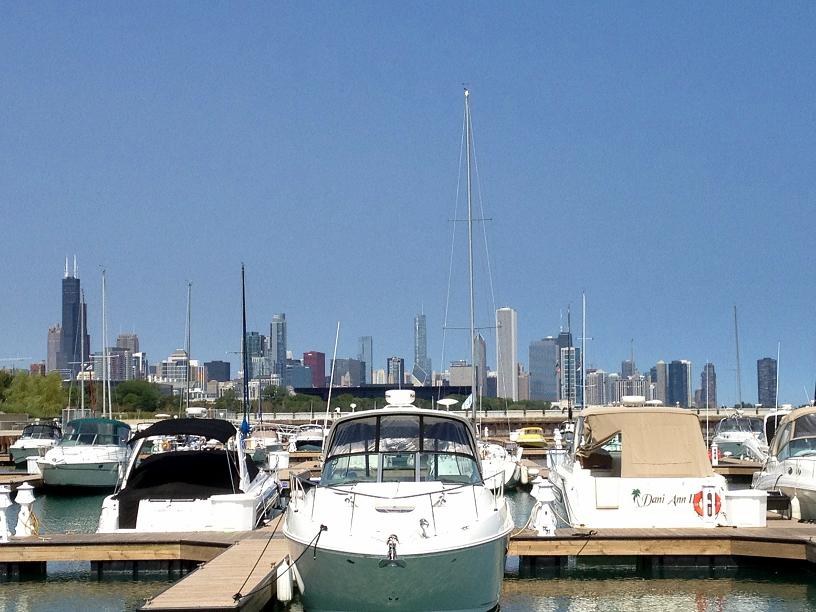

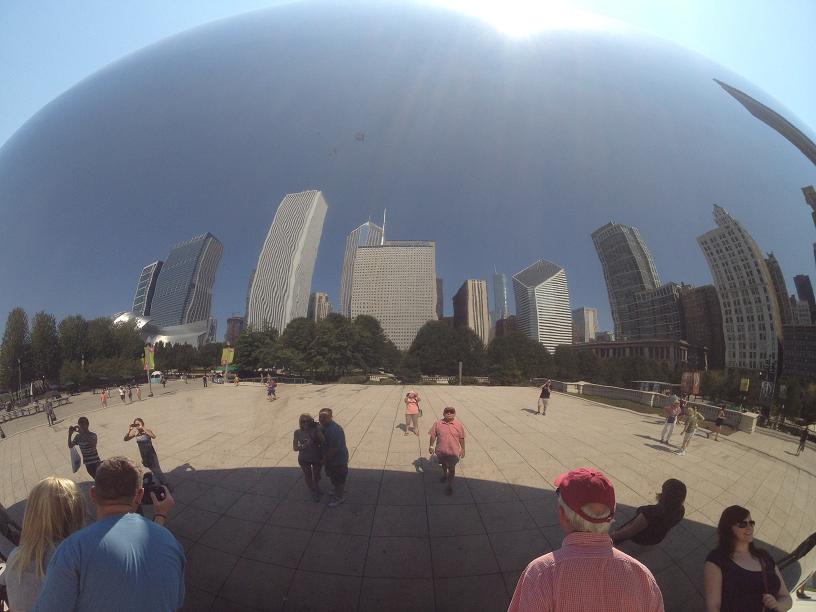

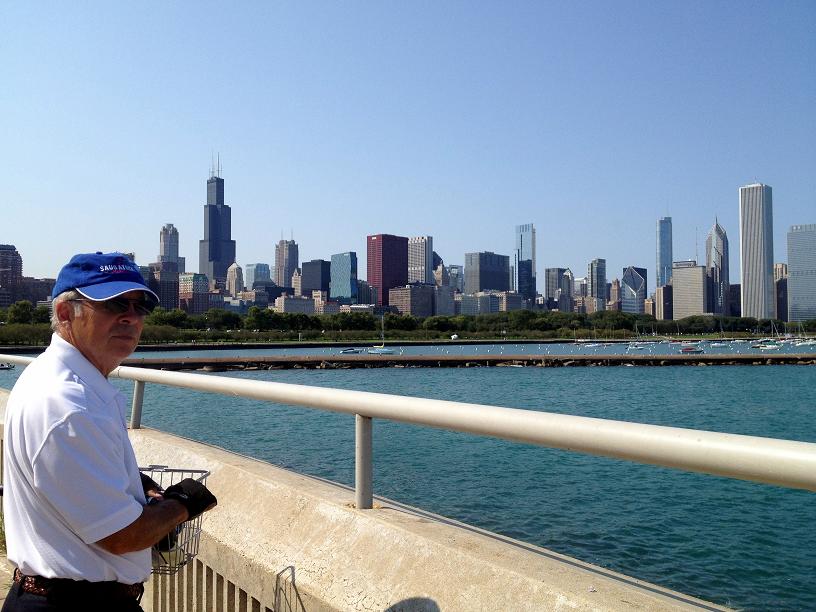


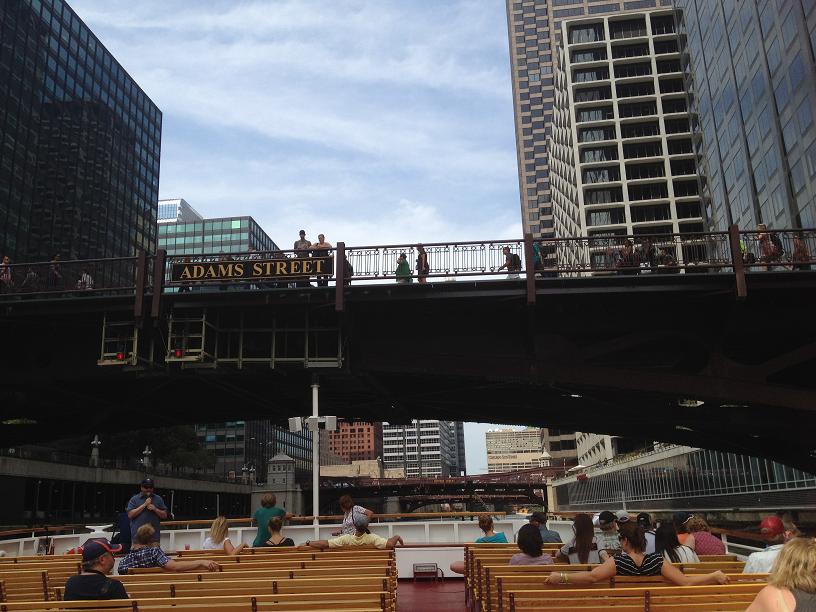
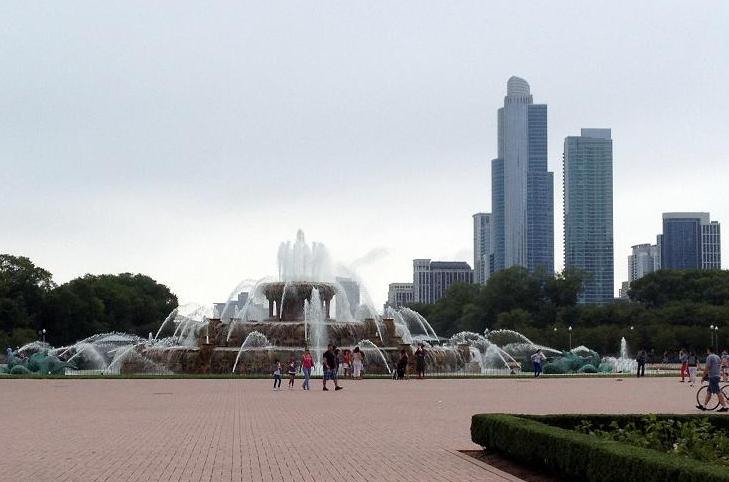
 RSS Feed
RSS Feed